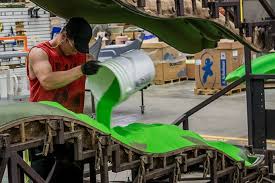Customization and Flexibility: Tailoring Products with Rotational Molding
Rotational molding, also known as rotomolding, can be a distinctive production method useful for making hollow plastic-type material merchandise. This method delivers unique positive aspects over other molding tactics, which makes it well-liked in different industries. Here’s all you need to know about rotational molding:
Process Summary:
Rotational Molding consists of four main actions: launching, heating system, cooling down, and unloading. First of all, powdered resin is filled into a hollow mildew. The mold will be heated up and rotated concurrently in numerous axes. Since the fungus rotates, the resin melts, finish the inner wall surfaces evenly, forming the required form. As soon as the resin cools down and solidifies, the mold is launched, along with the completed item is extracted.
Pros:
Design Versatility: Rotational molding allows for complex models and intricate geometries, so that it is appropriate for producing a wide range of items, from storing tanks to toys and games.
Standard Wall Density: Contrary to other molding tactics, rotational molding assures uniform wall structure thickness, causing goods with consistent durability and strength.
Price-Effectiveness: Tooling fees for rotational molding are relatively lower compared to other approaches like injection molding, especially for big and sophisticated pieces.
Fabric Versatility: Various thermoplastic components can be utilized in rotational molding, which includes polyethylene, PVC, and nylon, providing flexibility in item features such as durability, overall flexibility, and compound amount of resistance.
Programs:
Rotational molding realizes software across diverse sectors:
Car: Used for producing gasoline tanks, atmosphere ducts, and interior parts.
Aerospace: Makes light in weight, resilient factors for airplane interiors.
Agriculture: Produces normal water tanks, fertilizer tanks, and agricultural products.
Toys and Recreation: Creates play ground products, kayaks, and athletic merchandise.
Health-related: Manufactures durable healthcare devices like range of motion aids and sanitation products.
Obstacles:
Despite its pros, rotational molding features some problems:
Pattern Time: The method may be time-taking in due to the progressive heating and cooling necessary, restricting production charges.
Substance Waste materials: Unwanted substance can be made during shaping and doing, ultimately causing greater materials charges.
Minimal Substance Selection: Although adaptable, rotational molding is primarily suitable for thermoplastics, reducing substance possibilities when compared with other strategies.
In conclusion, rotational molding is a versatile producing approach supplying design mobility, charge-efficiency, and fabric adaptability. Its number of software across a variety of sectors underscores its value in modern day production.


